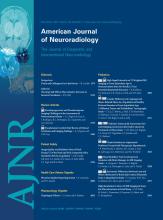Abstract
BACKGROUND AND PURPOSE: The differential diagnosis of Parkinson syndromes remains a major challenge. Quantitative MR imaging can aid in this classification, but it is unclear which of the proposed techniques is best suited for this task. We, therefore, conducted a head-to-head study with different quantitative MR imaging measurements in patients with IPS, MSA-type Parkinson, PSP, and healthy elderly controls.
MATERIALS AND METHODS: Thirty-one patients and 13 controls underwent a comprehensive quantitative MR imaging protocol including R2*-, R2- and R1-mapping, magnetization transfer, and DTI with manual region-of-interest measurements in basal ganglia regions. Group differences were assessed with a post hoc ANOVA with a Bonferroni error correction and an ROC.
RESULTS: The best separation of MSA from IPS in patients and controls could be achieved with R2*-mapping in the PU, with an ROC AUC of ≤0.96, resulting in a sensitivity of 77.8% (with a specificity 100%). MD was increased in patients with PSP compared with controls and to a lesser extent compared with those with IPS and MSA in the SN.
CONCLUSIONS: Among the applied quantitative MR imaging methods, R2*-mapping seems to have the best predictive power to separate patients with MSA from those with IPS, and DTI for identifying PSP.
ABBREVIATIONS
- APS
- atypical Parkinson syndrome
- AUC
- area under the curve
- CN
- (head of the) caudate nucleus
- FA
- fractional anisotropy
- FLASH
- fast low-angle shot
- IPS
- idiopathic Parkinson syndrome
- MD
- mean diffusivity
- MPRAGE
- magnetization-prepared rapid acquisition of gradient echo
- MSA
- multiple systems atrophy
- MTR
- magnetization transfer ratio
- PA
- globus pallidum
- PSP
- progressive supranuclear palsy
- PU
- putamen
- R1
- T1 relaxation rate
- R2
- T2 relaxation rate
- R2*
- T2* relaxation rate
- ROC
- receiver operating characteristic analysis
- SN
- substantia nigra
- STEAM
- stimulated echo acquisition mode
- © 2011 by American Journal of Neuroradiology












